Vaccination against hepatitis B (Indicator 24)
Last update
The indicator describes the following: Vaccination coverage against hepatitis B among infants.
In 2017, universal hepatitis B vaccination was included in the Norwegian Childhood Immunisation Programme. The first vaccination coverage for an entire year's birth cohort for this vaccine became available in 2020 as part of the vaccination coverage statistics for 2-year-olds. Since the introduction, the vaccination coverage has remained high.
Results
During the period 1990-2016, the hepatitis B vaccine was only offered to infants whose parents came from countries where the disease is more common, so the vast majority of Norwegian infants were not vaccinated as the prevalence in Norway was low. Vaccination was offered to the children of parents from countries with medium to high prevalence of hepatitis B, including all African and Asian countries, Eastern European countries, South American countries and some countries in Western Europe. During this period, vaccination coverage could not be calculated due to the inaccessibility of data on the number of children in the target population.
The percentage of children in each birth cohort who received at least one dose of the hepatitis B vaccine was instead reported, and could include children who were vaccinated due to other reasons (parents who paid for vaccination). The percentage of infants who were vaccinated as infants was around 28-36 per cent.
In 2017, universal hepatitis B-vaccination was included in the Norwegian Childhood Immunisation Programme. The vaccination coverage was reported for the first time in 2020, as part of the vaccination coverage statistics for 2-year-olds. The coverage for three doses of hepatitis B-vaccine among 2-year-olds in the Norwegian Childhood Immunisation Programme was 96% in 2023.
In 2024 it became possible to assess the coverage for the birth dose provided for newborns of mothers with chronic hepatitis b infection. This group of children have the highest risk of developing chronic hepatitis b infections if prophylactic treatment is not given at birth. The coverage of the birth dose for this group is much lower than the target set in the WHO Europe Action plan for elimination of hepatitis B, and was only 59 % in 2023. The target was to achieve a coverage above 90 % in 2020, and above 95 % within 2030.
Data source: Norwegian Immunisation Registry SYSVAK
The data source for this indicator is the Norwegian Immunisation Registry SYSVAK
A description follows below.
Description
The Norwegian Immunisation Registry SYSVAK maintains an overview of the vaccination status of the individual and vaccination coverage in Norway.
The Norwegian Childhood Immunisation Programme includes a range of different vaccines which the health authorities recommend should be given to children and adolescents. Basic vaccination is mainly given to infants and young children, and for most vaccines, booster doses are offered to school-age children. The Norwegian Institute of Public Health is responsible for procuring the vaccines for the Norwegian Childhood Immunisation Programme and distributing them to the municipalities. Vaccination takes place at public health clinics and through the school health service and is free of charge. All administered vaccines are registered at individual level in SYSVAK. The Norwegian Childhood Immunisation Programme publishes an annual report that includes coverage statistics, reported cases of diseases for which vaccination is provided, the type of vaccines that have been used.
Global indicator definition
WHO’s definition of the indicator
Indicator 24. Vaccination coverage against hepatitis B virus monitored by number of third doses of Hep-B vaccine (HepB3) administered to infants.

